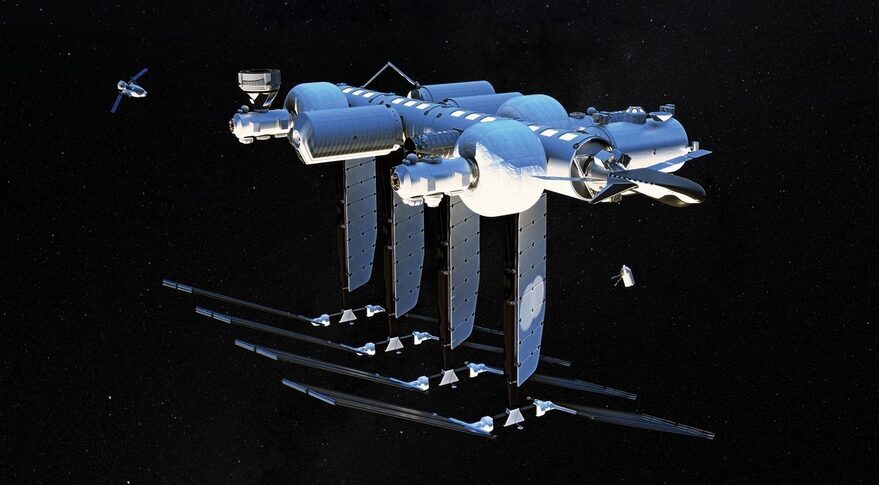24.07.2022

The Orbital Reef commercial space station being developed by a team led by Blue Origin. NASA's safety panel warned such stations may not be ready by the time the ISS is set to be retired in 2030. Credit: Blue Origin
WASHINGTON — NASA’s safety advisers warn that the agency’s efforts to transition from the International Space Station to commercial space stations without a gap are on a “precarious trajectory.”
At a July 21 meeting of the Aerospace Safety Advisory Panel, members said they were concerned that commercial stations whose development is being supported by NASA were unlikely to be ready in time before the ISS is retired at the end of the decade, and that those efforts suffered from insufficient budgets.
Those plans, called Commercial Leo Earth Orbit (LEO) Destinations by NASA, “are on a precarious trajectory to realization on a schedule and within the projected resources needed to maintain a NASA LEO presence,” said Patricia Sanders, chair of the panel. “This is an area of concern for us.”
NASA selected proposals from teams led by Blue Origin, Nanoracks and Northrop Grumman in December for funded Space Act Agreements to mature their designs for commercial space stations. The agency has a separate agreement with Axiom Space giving that company access to a port on the ISS to which the company is preparing to attach a series of commercial modules that will later form the core of a stand-alone station.
However, Amy Donahue, a member of the panel, said that NASA plans to issue formal requirements for its use of those stations only in late 2024. “There is very little margin for ensuring a continuous U.S. presence in LEO is maintained” given the planned ISS retirement in 2030, she said.
The concern the panel had, she said, involved human-rating of a commercial station, noting that the current schedule calls for doing so faster than any other agency human spaceflight program since Mercury. “It raises some question about what NASA might do to mitigate the risk of failing to meet this schedule,” she said. “It’s certainly a concern for us from a risk perspective.”
The panel is not the first to warn that NASA’s schedule for replacing the ISS may not be achievable. A report by NASA’s Office of Inspector General last November, just before NASA made its commercial space station awards, warned a commercial station “is not likely to be ready until well after 2030”and that NASA’s schedule for have one or more ready before 2030 “is unrealistic.”
Another issue is resources not just for supporting development of the stations but also NASA’s use of them. “It doesn’t have a forecast or a way to guarantee to providers the extent of NASA’s business once a commercial laboratory is available,” Donahue said. “We also see it as likely that NASA will have to provide bridge funding during the transfer of operations from a fully funded government space station to a fully commercial space station for the duration of time required to develop a robust commercial market.”
“In short,” she concluded, “NASA really needs to acknowledge and plan for the underlying reality that maintaining a continuous human presence on orbit now and into the future is going to require significant government investment.”
Keeping the ISS operating through 2030 faces challenges of its own. Another member of the panel, Mark Sirangelo, noted several issues that both NASA and the safety panel have been tracking, from geopolitical tensions with Russia to pressure shell cracks in a Russian module.
“The ISS is now in its third decade and it is feeling its age,” he said. “It faces new challenges all the time.”
The panel, he said, found no serious issues that threatened the station’s operations, but called on NASA to expedite replacement of the aging spacesuits whose technical problems currently prevent astronauts from performing spacewalks.
Some of those problems are beyond the control of NASA. Sirangelo cited the growing orbital debris population that has sharply increased the number of close approaches, or conjunctions, with the station. “The number of conjunctions with the ISS has increased substantially, and by multiples, over the last two years,” he said.
Much of that is due to the November 2021 demonstration of a Russian antisatellite weapon that destroyed the Cosmos 1408 satellite and created thousands of pieces of debris in orbits that intersect the ISS. He said that, as of June 1, there had been 681 conjunction notifications for the station so far this year. Of the, 505 were linked to debris from that ASAT demonstration.
Quelle: SN

